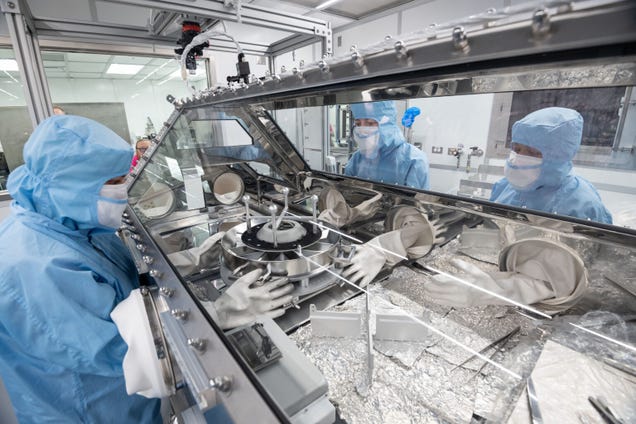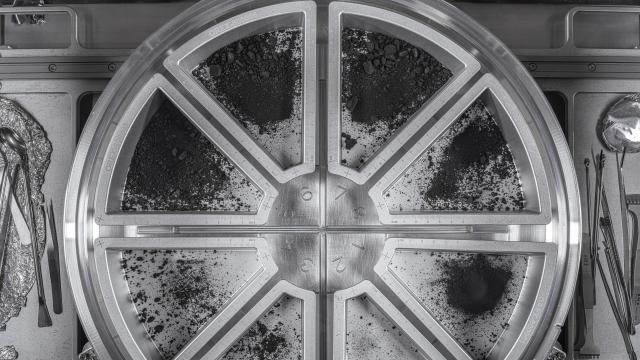After opening up that stubborn sample canister, NASA was finally able to weigh the full amount of asteroid bits snagged by its spacecraft more than three years ago. As it turns out, there is plenty of space rock that made its way to Earth.
The OSIRIS-REx spacecraft delivered a total of 4.29 ounces (121.6 grams) of material from asteroid Bennu, which is over twice the mission’s goal, NASA revealed on Thursday.
The space agency had already collected black dust and debris on the avionics deck of the canister, as well as some of the material from inside the canister with tweezers or a scoop, which added up to 2.48 ounces (70.3 grams). After removing the TAGSAM (Touch-and-Go Sample Acquisition Mechanism) head, where the bulk of the asteroid sample is stored, the rest of the sample was poured into wedge-shaped containers and weighed in at 1.81 ounces (51.2 grams). Combined together, plus additional particles collected outside of the pour, the total weight is more than double the 60 grams of material needed to meet the mission’s requirements.

The OSIRIS-REx mission launched in September 2016 and reached asteroid Bennu in December 2018. The spacecraft snagged pieces from the asteroid in October 2020 before making its way back to Earth in May 2021. The spacecraft dropped off the sample in the Utah desert in September 2023, but NASA has been struggling to crack open a round sampler head at the end of an articulated arm that the spacecraft used to grab the sample.
Two of the 35 fasteners on the TAGSAM head could not be removed with the current tools approved for use in the OSIRIS-REx glovebox, preventing them from extracting the sample inside. At that point, however, the bonus sample collected was more than enough but NASA didn’t give up on the bulk of the rocky bits sealed inside the TAGSAM head.
In November, the curation team began work on developing new tools that could fit inside the glovebox that contains the canister and finally managed to crack it open on January 10.
The returned asteroid pieces will be divided among a sample analysis team of 230 global scientists for a deep dive into Bennu’s composition. NASA will keep at least 70 per cent of the sample at Johnson Space Center for future research to take place decades from now, hoping to take advantage of advanced technology in the coming years. Some of the asteroid bits will also be made available for public display at the Smithsonian Institution, Space Center Houston, and the University of Arizona.
